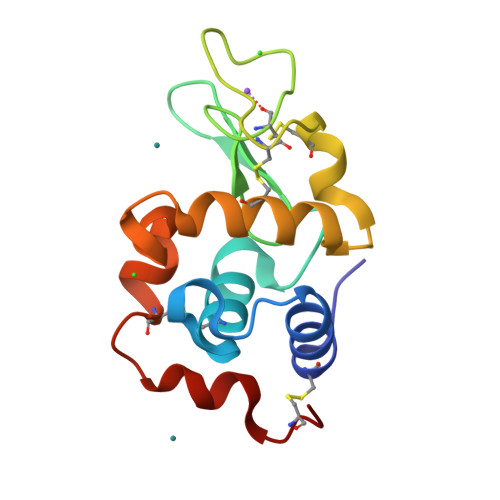Ruthenium metalation of proteins: the X-ray structure of the complex formed between NAMI-A and hen egg white lysozyme.
Messori, L., Merlino, A.(2014) Dalton Trans 43: 6128-6131
- PubMed: 24553967
- DOI: https://doi.org/10.1039/c3dt53582g
- Primary Citation of Related Structures:
4NY5 - PubMed Abstract:
A crystallographic study of the adduct formed between hen egg white lysozyme (HEWL) and NAMI-A, an established ruthenium(III) anticancer agent in clinical trials, is presented here. The X-ray structure reveals that NAMI-A coordinates the protein, as a naked ruthenium ion, at two distinct sites (namely Asp101 or Asp119) after releasing all its original ligands (DMSO, imidazole and Cl(-)). Structural data of the HEWL/NAMI-A adduct are compared with those previously obtained for the HEWL adduct of AziRu, a NAMI-A analogue bearing a pyridine in place of imidazole. The present results further support the view that NAMI-A exerts its biological effects acting as a classical "prodrug" first undergoing activation and then causing extensive metalation of relevant protein targets. It is also proposed that the original Ru-ligands, although absent in the final adduct, play a major role in directing the ruthenium center to its ultimate anchoring site on the protein surface.
Organizational Affiliation:
Department of Chemistry, University of Florence, Florence, Italy.





















